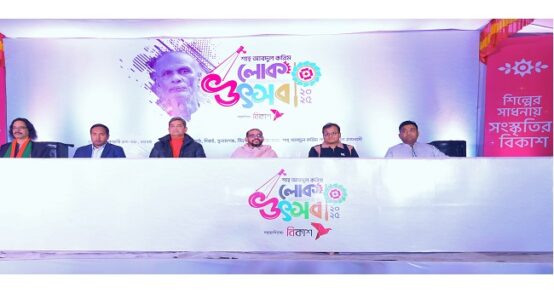Life expectancy at birth for Bangladeshis has reached 72.3 years while the life expectancy at birth in 2020 was 72.8 years, according to the Sample Vital Registration System (SVRS) 2021.
The Bangladesh Bureau of Statistics (BBS) launched the survey conducted in 2,012 sample areas across the country.
Planning Minister MA Mannan was present at the report-unveiling ceremony as the chief guest at the BBS Auditorium at Agargaon in the capital today.
State Minister for Planning Dr Shamsul Alam and Statistics and Informatics Division Secretary Dr Shahnaz Arefin were present as special guests at the event presided over by Director General of the Bangladesh Bureau of Statistics (BBS) Md Matiar Rahman.
The report showed that women’s life expectancy decreased from 74.5 years in 2020 to 74.1 years in 2021, while men’s life expectancy has decreased from 71.2 years in 2020 to 70.6 years in 2021. This means women live longer than men in the country.
BBS officials said that statistically, the drop did not represent a big difference.
On a positive note, the report indicates an increase in literacy rate to 76.4 percent, up from 75.2 percent in the previous year.
Speaking on the occasion, the Planning Minister said that the rise in literacy rate and widening of the electricity coverage indicates that the present government works for ensuring welfare of people.
Mannan said despite the shocks of the COVID-19 pandemic, improvement in two such above indices, which is also very much challenging for any country, showed the capacity of the government to deliver services.
State Minister for Planning Dr Shamsul Alam said that the BBS has been able to ensure justice to its name as the national statistical agency despite having limited manpower and some limitations.
The report said that the estimated population of the country on July 1, 2021 was 170.26 million of which 85.93 million were female and 84.33 million were male.
The natural growth rate of population in 2021 was 1.301 percent which was 1.303 percent in 2020. The gender ratio of male and female was 100-98.1 percent while the dependency ratio was 50 percent.
The density of population in per square kilometer was 1,153.
The survey findings said that the number of contraceptive method users in the country increased in 2021 to 65.6 percent up from 63.9 percent in 2020. The average size of the households remained at 4.3 in 2021 like in 2020.
The number of sanitary latrine users increased to 85.8 percent in 2021 up from 81.5 percent in 2020.
Project Director of SVRS Alamgir Hossain while sharing the report findings said that the crude death rate — number of deaths occurring during the year per 1000 of the population — rose from 5.1 years in 2020 to 5.7 years in 2021.
Hossain said the reasons for rise in mortality and decline in life expectancy rates could be an impact of the COVID-19 pandemic.
In 2017, the average life expectancy was 72 years.
There has been progress, overall, in Bangladesh’s health sector over the last decade as the population’s average life expectancy has increased, and the rate of child and maternal deaths has decreased.
Communicable diseases like tuberculosis, malaria and polio are on the verge of eradication while the treatment of diarrhea and pneumonia has improved.
Simultaneously, non-communicable diseases have emerged as a new challenge in the country. The rate of those being affected by or dying from different types of non-communicable diseases – like cancer, diabetes and heart disease – is on the rise.
The average life expectancy of a population is an important indicator for assessing any health system.
According to the Bangladesh Bureau of Statistics (BBS), the average life expectancy in Bangladesh was 67.2 years in 2009.

